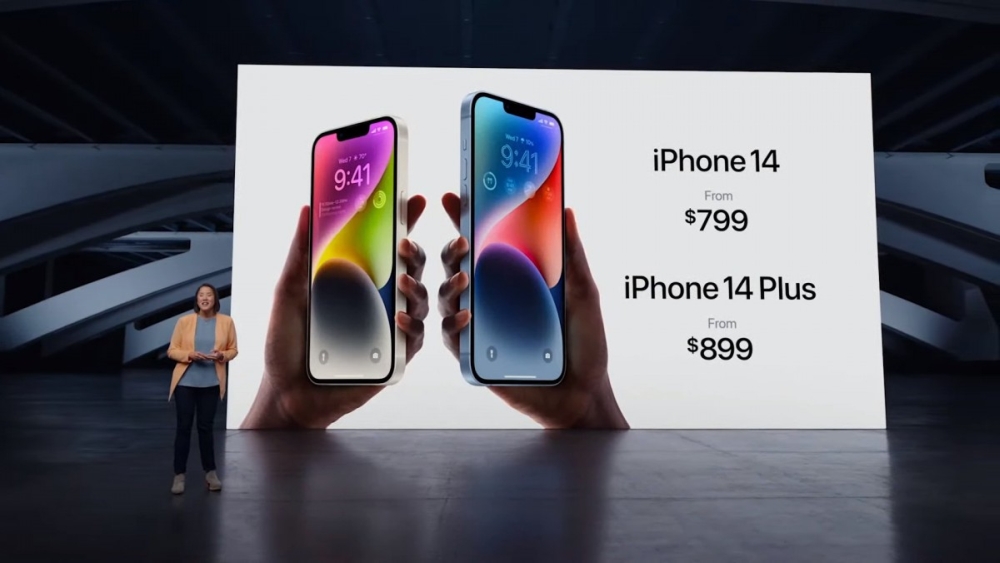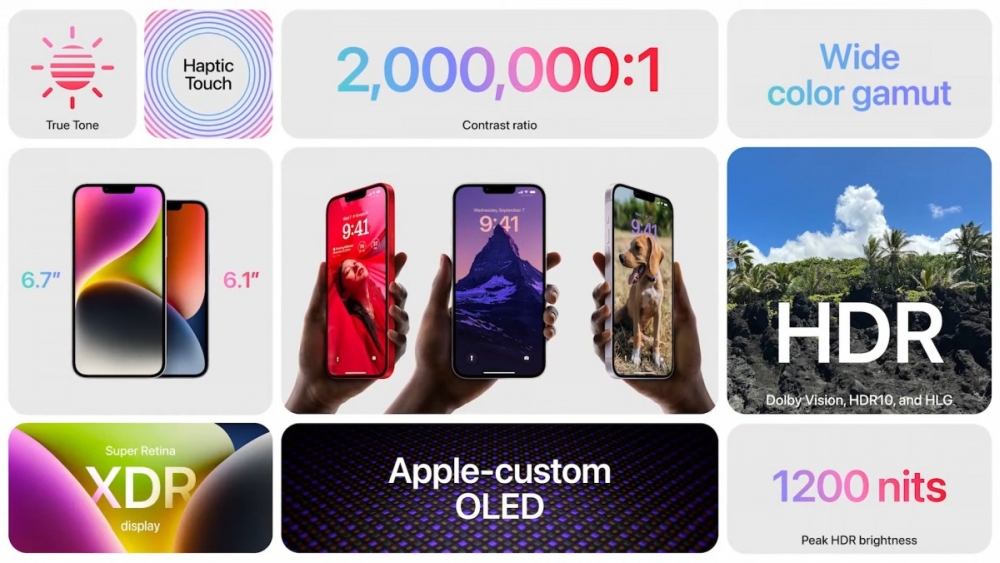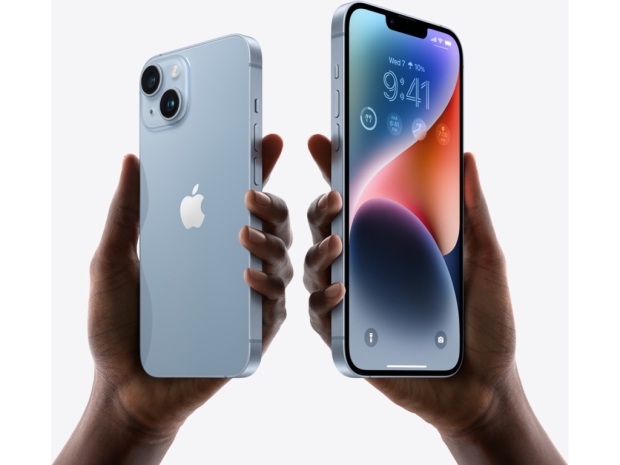As noted, the iPhone 14 will be the smallest and the cheapest option, as Apple has decided to kill the iPhone mini. With a 6.1-inch screen, the iPhone 14 is pretty small, at 146.7x71.5x7.8mm. It has a Super Retina XDR OLED screen with 1,200 nits of brightness and 2532x1170 resolution, leaving it with 460 ppi of pixel density.
The iPhone 14 Plus is a bit larger with a 6.7-inch Super Retina XDR OLED screen with the same 1,200nits of brightness and 2778x1284 resolution.
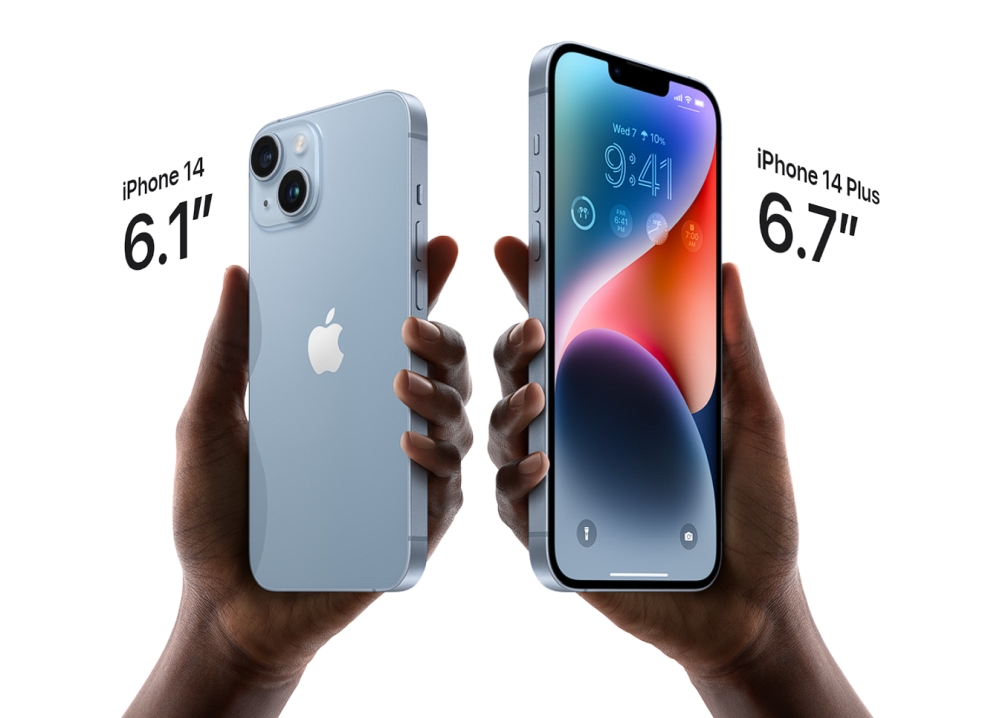
Both the iPhone 14 and the iPhone 14 Plus are powered by the last-year A15 Bionic SoC. Thankfully, Apple went for the iPhone 13 Pro one, with a 5-core GPU, so it should be pretty decent.
Apple also updated the camera system with 12-megapixel 1.9µm main camera sensor, sitting behind a 26mm wide f/1.5 lens, with dual pixel PDAF and sensor-shift OIS. The main one is backed by a 12-megapixel sensor behind a 13mm ultrawide f/2.4 lens. The front camera is now a 12-megapixel one (23mm wide f/1.9) and it gets autofocus.
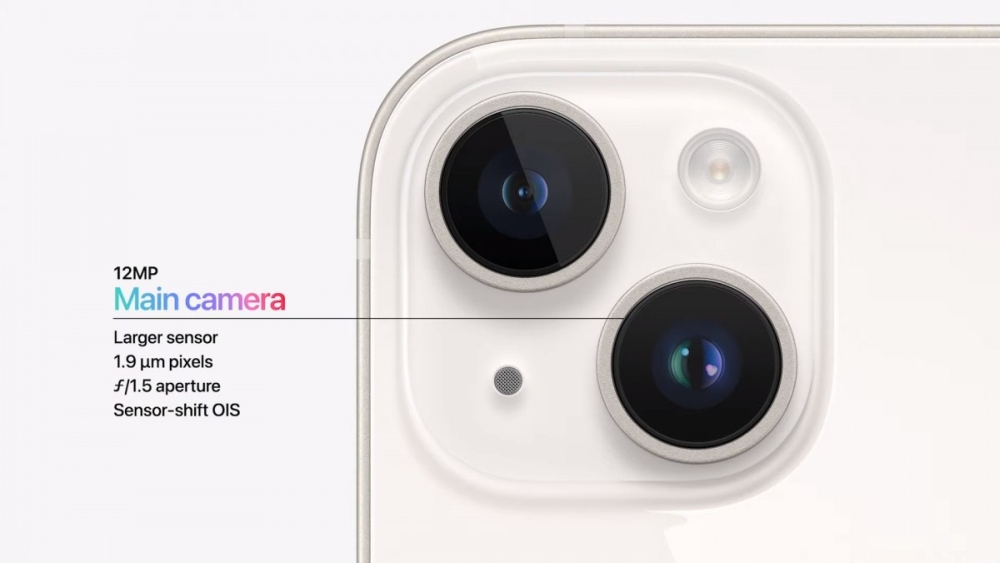
Apple was quite keen to note that the iPhone 14 series has the best battery around, and the iPhone 14 Plus offers up to 26 hours of video playback (14 hours for the iPhone 14).
Connectivity-wise, you get all the usual connectivity options with WiFi 6, Bluetooth 5.3, USB 2.0 Lightning, Face ID, accelerometer, gyro, proximity, compass, barometer sensors, and the new emergency SOS via satellite SMS, which will work only in the US and Canada, as of November, and it will be free for two years.
The pre-orders for iPhone 14 and the iPhone 14 Plus start on September 9th, and these come in Midnight, Starlight, Blue, Purple, and Red color options.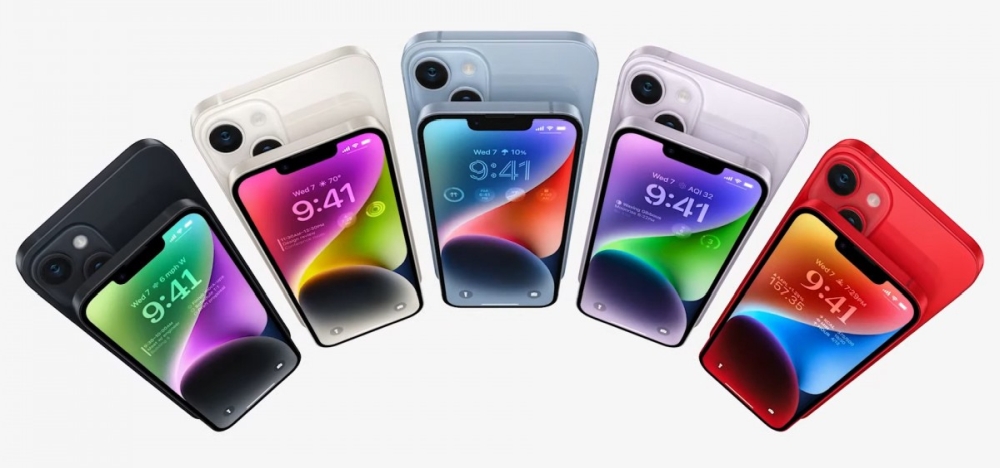
The iPhone 14 starts at $799 and it will ship on September 16th, while the iPhone 14 Plus starts at $899, and it will come on October 7th.
